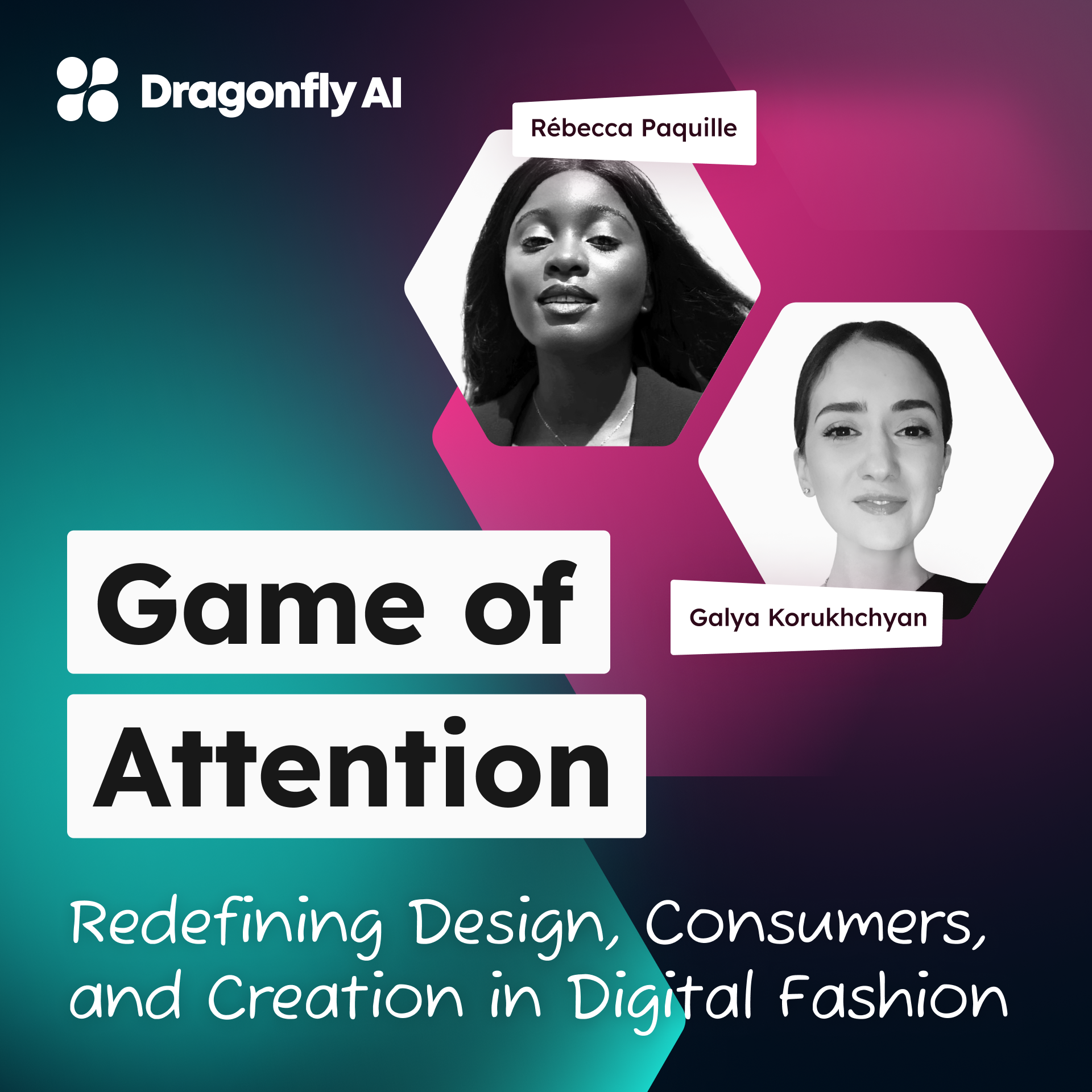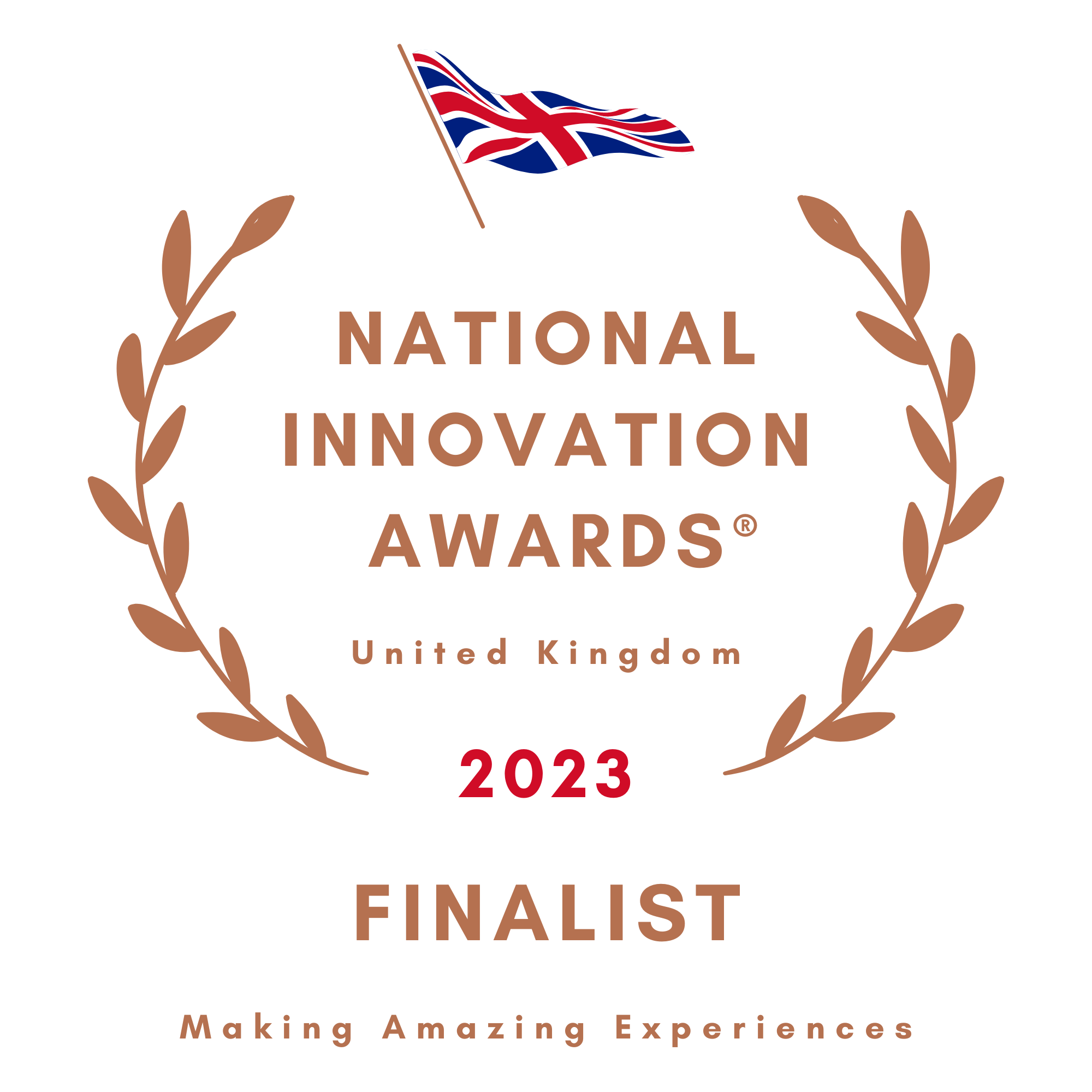Dragonfly AI is a predictive analytics platform designed to help you improve the quality and effectiveness of your creative across any format, channel and market.
Redefining Design, Consumers, and Creation in Digital Fashion
Expert-led podcast discussing trending articles, and news in the AI and attention spaces.

Webcasts led by experts
The fashion world is connecting on a deeper level with consumers through digital experience creation and different AI implementation.
Jess Litherland hosted this in-depth episode with experts Galya Korukhchyan and Rébecca Paquille.
This is a summary of the discussion so please do watch the full episode!
Q: In what ways do digital fashion technologies challenge or complement physical fashion and how might they coexist in the future?
Rébecca: I feel that digital does challenge the physical world because they can be more proactive. They can give customization opportunities to the final clients.
Digital and physical are also complementary. One can help the other boost their visibility, it would be really interesting to see more shops implementing digital into retail. For example, adding a VR mirror where clients could try their clothes if it’s not yet in stock.
Even speaking about digital sensory, retail has the experience, the sight, the smell that a client could have entering a shop while with digital it’s more difficult to touch the product.
Galya: We live in a world which is evolving and I like the idea of everything is changing constantly because nothing is constant really. I think definitely digital complements 100 % the physical world. I don't think it's either or, I do think it's both. I think right now what's happening with the digital area, it's really helping us to evolve in the way we work, in the way we see things from retail to product design to how it faces the consumer. I really like how the digital fashion technologies help us to, from campaigns in marketing to product design, prototyping to a customer experience.
Jess: Yeah, I definitely agree with all of that, especially from kind of the consumer perspective, having the digital feed into the in store. I think that really takes that convenience to the next level for the consumer.
Galya: It starts with convenience, right? We all know that retail experience is extremely important these days because people like to hang out, especially the younger generation to try on the experience and to discover this in store.
But oftentimes we go online because it's really convenient to just get it delivered to the store, depending on what type of a category you’re speaking about.
Rébecca: I think digital can also be increased and improved with types of sensory physical touch. For example, different types of sounds according to the client that arrived, if it’s a Gen Z client entering a shop, we could have a fragrance that is fruitier. Digital can also create an elevation of experience inside the shop.
Galya: I really like what you say because I do think when everything digital comes up like AI technologies, people think that it's going to remove the human part of things. However, they really go hand in hand in my view. When specific brands use all the digital technologies in the right way, plus the human, know, there are different like revolve creates through AI, you know, the product designs and everything.
They complement each other. And that's the beauty of things because it still comes down to the human craftsmanship, to the human eye, to the human creativity to really pick and choose and to really drive the brand to the next level, but through different tools.
Q: How does digital fashion enable rapid prototyping compared to traditional methods? And what are the implications for reducing time to market?
Galya: It comes down to the creator of whoever uses the tools and the designer. I have communicated with some of my colleagues and read a lot of reports that it can be really good for the sustainability point because then we can really test much quicker and learn quicker and answer the demands that are there. From that point of view, it's a very comprehensive tool.
Jess: On the fragrance side of things, obviously the kind of reducing time to market, I mean, it's a completely different type of thing, right? Typically, how long would a fragrance take to get to market from kind of initial concept?
Rébecca: It depends really on the project and the client. For example, we had one client, we had just one week to create the fragrance. The AI helped us to deliver a fragrance already pre-made and then recreated by a creator, a perfumer. And then it took one week that we have maybe one or two weeks of addition when the client prefers to have something a little bit more personalized with these layers or this background a little bit more opulent.
What I really like regarding on the fashion side, the AI can also help us to find a formula that could mix different ingredients of tissue, different textiles, to keep the price a bit low, but increase the strength of the material to allow every demography to use high quality clothing or created digitally. I guess he could be doing it five times more, faster.
Q: When it comes to engaging consumers, what can brands do to attract more attention in such a competitive environment?
Rébecca: I would definitely say sensory. I think the human touch is really important. I remember Galya said there are people who go to retail just to hang out and I think this is an opportunity for the brand to catch them with the sensory and the storytelling of the brand.
I have one fragrance in mind that is called Le Parfum de Marley. It's a beautiful fragrance packaging with the shape of a goddess inside the packaging. But the most interesting in the way of describing their fragrance, they use terminology that you can visualize yourself inside a garden or you visualize yourself inside an emotion, for example, you feel happy when you read just the description and you want to smell it even if it's for the screen. And the market is really succeeding with the digital senses, fragrances, but also alcohol, if we go a little bit further inside your luxury spectrum.
Galya: It all comes down to finding different ways to immerse your consumer in your brand experience and really create that from one channel to another channel and find different ways how you translate that and really immerse your consumer in really that world that you have for the brand.
The one that I am quite inspired about personally is Swarovski. I think everything that the way the brand has changed. It's all coming down to understanding what's your brand, what's your consumer and really meticulously bringing to life your brand experience across all the touch points.
Such an interesting set of insights from the fashion and retail world regarding consumer experience, creative experiences, and the importance of leaning on technology tools.
Watch the full episode above.
Listen on Spotify here.
And don’t forget to subscribe here!

